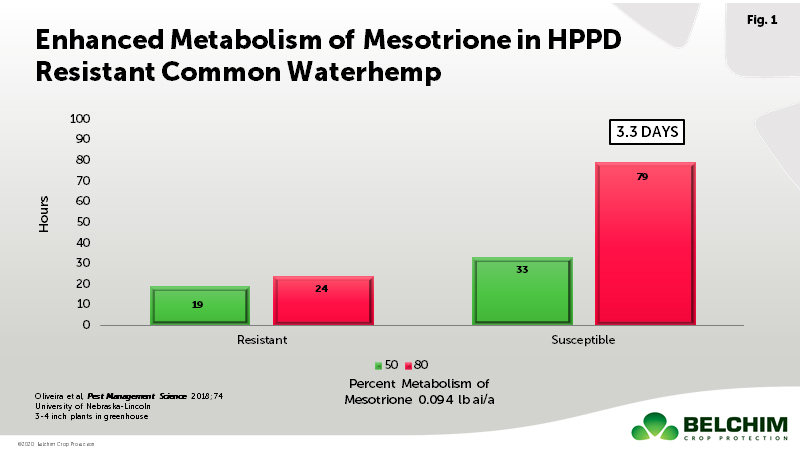R&D Beneficiary

Ah, the sweet irony of it all: The focus on seeds and traits by ag chemical manufacturers — which at first blush seemed to threaten retailers’ profit margins — now requires increased research and development of more sophisticated crop protection products.
Indeed, a steady stream of new products are coming out of company development pipelines to complement the advanced seeds and traits, as evidenced by the latest batch.
Up And Coming Herbicides
Some of the newer herbicides to watch for include:
Capreno from Bayer CropScience, containing thiencarbazone-methyl + tembotrione, is a selective corn herbicide. It provides full-spectrum control of broadleaf weeds, including those resistant to glyphosate, as well as grasses. Capreno delivers longer residual control than leading postemergence herbicides, according to the company, and offers one-pass postemergence control, yet is flexible enough to fit into a traditional two-pass herbicide program. It will be offered in limited quantities in 2010.
Another Bayer CropScience corn herbicide, Balance Flexx, which contains the active ingredient (a.i.) isoxaflutole, has been available this season on a limited basis. It provides broadspectrum control, application flexibility, and crop safety. As little as a half-inch of in-season rain reactivates the herbicide, which protects field corn from weeds that have shown ALS, glyphosate, and triazine herbicide resistance.
Prequel from DuPont is a burndown plus residual corn herbicide that controls winter annuals, early spring grasses, and broadleaf weeds to help keep corn clean through the critical weed-free period. Containing rimsulfuron + isoxaflutole, Prequel is already available and is appropriate for use with a glyphosate program for pre- and early-season weed control.
DuPont received EPA approval in time to market its Accent Q (nicosulfuron) and Steadfast Q (nicosulfuron + rimsulfuron) herbicides in 2009. Both provide corn growers with the flexibility to make applications under more diverse weather conditions, across more hybrids, and with a wider range of adjuvants than their predecessors.
Flexstar GT herbicide from Syngenta Crop Protection was also approved for use in glyphosate-tolerant (GT) soybeans in time for the 2009 growing season. A premix of fomesafen + glyphosate, Flexstar GT is a resistance management solution for postemergence use, and offers preemergence activity on more than 25 weeds. It contains Isolink II Technology, a unique adjuvant system designed to optimize both the contact activity of fomesafen and the systemic activity of glyphosate while reducing crop injury.
Kixor is BASF‘s newest herbicide coming out of its product pipeline. Registration for Kixor, containing the a.i. saflufenacil, is anticipated for the 2010 use season in North America. It can be used alone or mixed with glyphosate and applied preplant for fast and complete burndown of more than 80 dicot weeds, including resistant biotypes, and also be used as a preemergence treatment in corn and sorghum to control all major dicot weeds without triazine herbicides. BASF plans to unveil four Kixor-powered products, each targeting specific weeds and crops in different regions of the U.S.
Dow AgroSciences has two new rice herbicides, GraspXtra and Rebel EX, which will be available in the spring of 2010.
Insecticide Advancement
Lorsban Advanced insecticide from Dow AgroSciences is an improvement to Lorsban-4E. It contains the same a.i. (chlorpyrifos), use rates, and benefits as its predecessor but uses innovative technology to produce a low-odor, water-based formulation. The company says Lorsban Advanced provides efficacy, quick knockdown, residual control, and tankmix flexibility for control of all cutworm species and broadspectrum control of aphids, spider mites, and other pests in numerous crops, including corn and wheat.
Dow AgroSciences also has an insecticide for sap feeding insect control in its pipeline, and will begin educating retailers and growers about the product in 2010.
All In The Treatments
The latest in seed treatments includes:
Acceleron brand seed treatments from Monsanto Co. Acceleron is the umbrella name for the company’s new seed treatment platform featuring novel products meant to complement its seed and trait strategy. It will include proprietary product mixtures providing soybeans, corn, and cotton with an early season advantage through improved plant health and insect/disease protection. In 2010, the Acceleron offering for soybeans adds imidacloprid insecticide and a plant health component to the 2009 product (a fungicide mix of pyraclostrobin + metalaxyl), and a mix of ipconazole fungicide + clothianidin insecticide will debut on Genuity SmartStax corn. In cotton, Acceleron will debut in 2011.
Avicta Complete Corn seed treatment from Syngenta Crop Protection. It was available in limited quantities this year, and a full launch is planned for 2010. It targets nematodes in corn where the traditional cotton/soybean pest is becoming a growing problem. Avicta Complete Corn contains Avicta nematicide (abamectin), and is packaged with Cruiser 500 insecticide and Apron XL, Maxim XL, and Dynasty fungicides.
Rancona Summit from Chemtura Crop Protection, approved by EPA in early August. The novel soybean seed-applied fungicide is a “step change” for soybean seed treatment, giving growers the ability to access all the distinctive seed and seedling disease protective features of Rancona in a ready-to-use product for soybeans. It has contact as well as systemic activities and is highly efficacious against a majority of seed and soil-borne fungi. Specifically designed for soybeans in a microdispersion formulation, it contains ipconazole + metalaxyl; the latter provides pythium protection.
Fungicide Growth Leads Expansion
Fungicides have become the single largest product category for Syngenta, and now the company is putting dollars behind its leading a.i., azoxystrobin, found in such key brands as Quadris, Quilt, and Abound. Plans to expand production were announced in 2008 and the new system is expected to be online by the first quarter of 2010.
The company’s fungicide sales were up 25% in 2008 and surpassed $1 billion. and Syngenta anticipates strong long-term demand.
Syngenta’s $600 million worldwide investment in azoxy-strobin and the insecticide a.i., thiamethoxam, will take place over a three-year span.





